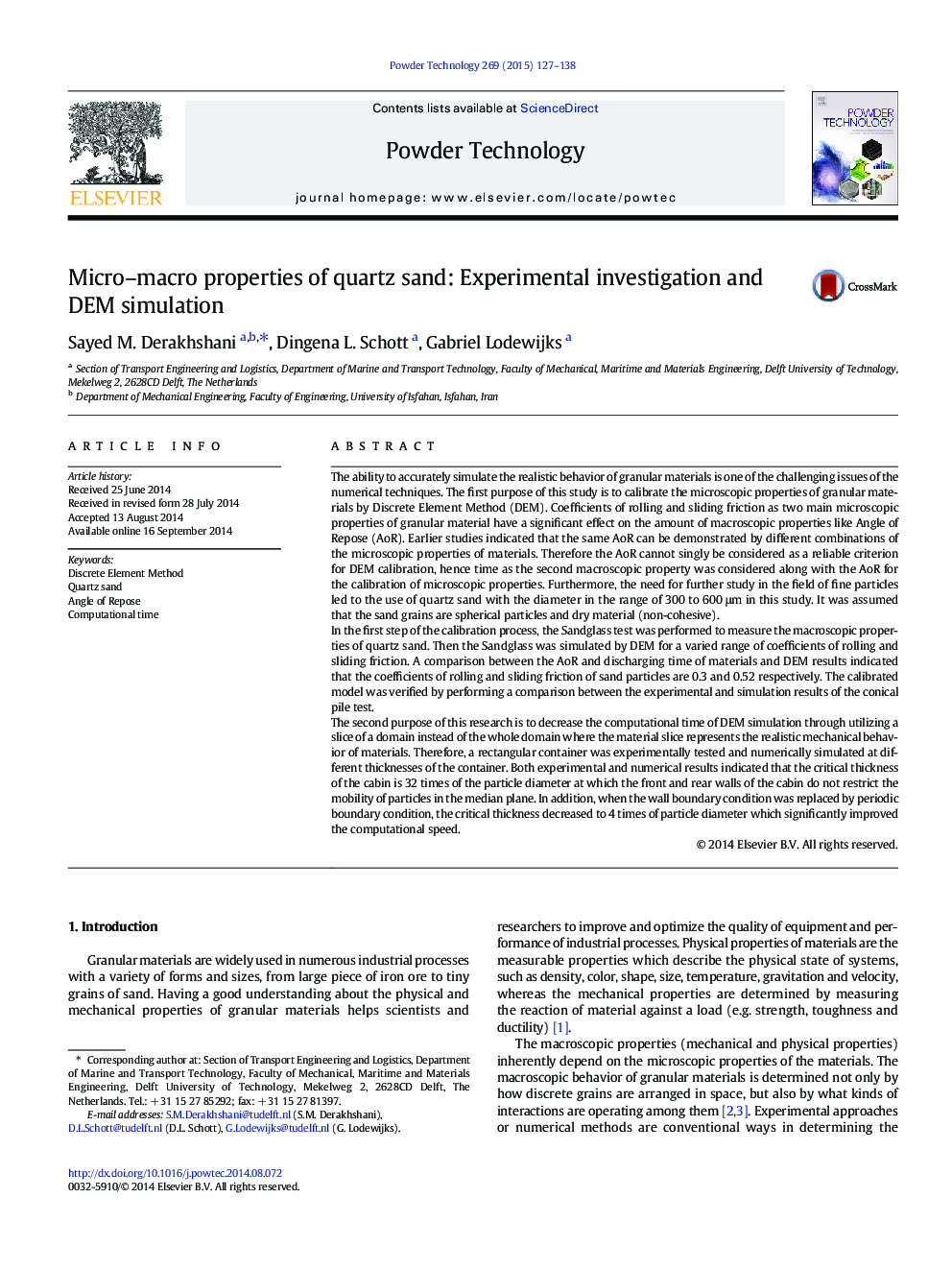| کد مقاله | کد نشریه | سال انتشار | مقاله انگلیسی | نسخه تمام متن |
|---|---|---|---|---|
| 235847 | 465651 | 2015 | 12 صفحه PDF | دانلود رایگان |

• DEM was utilized to determine the microscopic properties (μs & μr) of sand particles.
• Time as a macroscopic property was used to increase the accuracy of DEM calibration.
• For Wall B.C., the critical ratio of container thickness to particle diameter (W/D) is 32.
• For Periodic Boundary Condition (PBC), the critical ratio of W/D is 4.
• The PBC is about 15 times faster than the WBC in terms of computational speed.
The ability to accurately simulate the realistic behavior of granular materials is one of the challenging issues of the numerical techniques. The first purpose of this study is to calibrate the microscopic properties of granular materials by Discrete Element Method (DEM). Coefficients of rolling and sliding friction as two main microscopic properties of granular material have a significant effect on the amount of macroscopic properties like Angle of Repose (AoR). Earlier studies indicated that the same AoR can be demonstrated by different combinations of the microscopic properties of materials. Therefore the AoR cannot singly be considered as a reliable criterion for DEM calibration, hence time as the second macroscopic property was considered along with the AoR for the calibration of microscopic properties. Furthermore, the need for further study in the field of fine particles led to the use of quartz sand with the diameter in the range of 300 to 600 μm in this study. It was assumed that the sand grains are spherical particles and dry material (non-cohesive).In the first step of the calibration process, the Sandglass test was performed to measure the macroscopic properties of quartz sand. Then the Sandglass was simulated by DEM for a varied range of coefficients of rolling and sliding friction. A comparison between the AoR and discharging time of materials and DEM results indicated that the coefficients of rolling and sliding friction of sand particles are 0.3 and 0.52 respectively. The calibrated model was verified by performing a comparison between the experimental and simulation results of the conical pile test.The second purpose of this research is to decrease the computational time of DEM simulation through utilizing a slice of a domain instead of the whole domain where the material slice represents the realistic mechanical behavior of materials. Therefore, a rectangular container was experimentally tested and numerically simulated at different thicknesses of the container. Both experimental and numerical results indicated that the critical thickness of the cabin is 32 times of the particle diameter at which the front and rear walls of the cabin do not restrict the mobility of particles in the median plane. In addition, when the wall boundary condition was replaced by periodic boundary condition, the critical thickness decreased to 4 times of particle diameter which significantly improved the computational speed.
The microscopic properties of quartz sand were calibrated by Discrete Element Method (DEM). The calibrated coefficients of rolling and sliding friction are 0.3 and 0.52 respectively. By using Periodic B.C. instead of Wall B.C., the critical ratio of container thickness to particle diameter (W/D) decreased from 32 to 4 and the computational speed was 15 times faster.Figure optionsDownload as PowerPoint slide
Journal: Powder Technology - Volume 269, January 2015, Pages 127–138